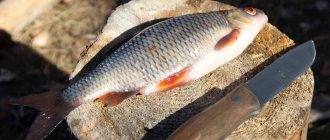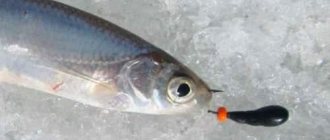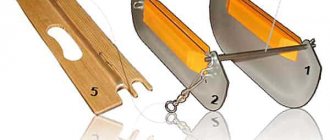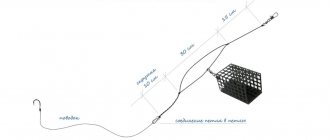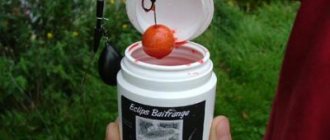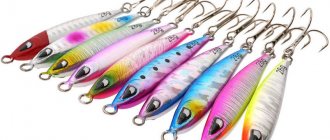Sturgeon balyk is incredibly tasty, but it can be quite difficult to buy a quality product in the store. Although, it would seem that it could be simpler - go to the fish department and purchase the desired carcass. But, in practice, it is almost impossible to profitably buy delicious cold-smoked fish that can be stored in the refrigerator for several days without developing an odor. This article will tell you how to make sturgeon balyk yourself at home as quickly as possible and without much effort.
Preparation
If you decide to cook sturgeon balyk at home, then you should start cooking right by purchasing the ingredients. The first thing you need to do is purchase quality sturgeon. It is best to choose fish that weighs about 3 kg. It must be refrigerated, that is, stored at a temperature from 0 to -2 degrees. It will not work to smoke fish that has been repeatedly frozen - it will be watery and tasteless.
Salting sturgeon at home
Before salting sturgeon, it is very important to choose the freshest fish of good quality, since salted sturgeon will be consumed without heat treatment, which destroys pathogens. In addition, its taste after salting will depend on the freshness of the selected fish, so it is advisable that the sturgeon is not frozen - this way it is easier to check its quality. Fresh fish should have clear, clean eyes, a smooth surface, elastic fillet and a pleasant fishy smell. You can check its freshness in one simple way by pressing your finger on the side of the sturgeon - a depression should form in it, which will quickly level out. Otherwise, the shelf life of such fish is unlikely to be exhausted.
Fish cutting
The first step in preparing sturgeon balyk is cutting the fish. Her head and tail should be cut off, and all the entrails should be pulled out of her belly. Then, in the middle of the ridge, you need to make an incision and pull out the vizig through it, that is, the so-called spinal cord, which is not prepared in large fish, since it is often poisonous. Then the peritoneum is cut off, and the remaining part is turned into balyk. For smoking, it is best to take the middle part - it is the most tasty and juicy, since there is a lot of fat here.
Sterlet balyk recipe
Surprise your family and friends by preparing sterlet balyk at home according to the recipe. Believe me, it is not difficult, you just need to have a little patience, since drying the fish takes several days. As a result, you will get a natural, first-class product! But to prepare balyk from sterlet, you will need to select large fish from the catch.
So, you will need chilled sterlet, coarse salt per 1 kg of fish 150 grams, sugar in a ratio of 1:4 to salt (400 grams of salt 100 grams of sugar), also a little ground pepper and bay leaf.
The most difficult thing in cooking fish is cutting it; be sure to arm yourself with a sharp knife. First of all, cut off the growths of sturgeon fish on the body, gut them and wash them. Next, cut off the head and tail, but we do not recommend removing the tough skin, as it will easily come off on its own after cooking. Then remove the spine and divide the fish into two fillets.
The recipe for sterlet balyk at home varies. We offer two simple methods for your choice.
- Take a flat container, a regular wide plate will do. Place the sterlet on it, sprinkle with a mixture of salt and sugar, and pepper. Then roll the fillet into rolls and place them on a plate. Wrap the plate in plastic wrap, making small holes, and refrigerate for at least 3 days. Tasty and tender sterlet is ready to eat.
- Take a deep container and put our mixture at the bottom. Place the sterlet fillet in a container, sprinkle with the mixture, pepper and add 2-3 bay leaves. This way you can make several layers of fish. Then install a small pressure of a couple of cans of water and put it in the refrigerator for 3 days. As soon as the fish is salted, rinse it in cold water, soaking it for 1-2 hours. Next, dry it a little with a paper towel and hang the fillet on a thread to dry in a well-ventilated place, you can use a fan. After 2 days, check the degree of dryness; thicker pieces will take a little longer. If you are satisfied with how the fish has dried, then you can safely try it. For storage, we recommend putting the sterlet balyk in the refrigerator, wrapping each piece in cotton cloth. To avoid odor, place the product in a plastic container. Store for no more than 30 days. We wish you a pleasant tasting!
Soaking and salting
The next step in preparing sturgeon balyk is salting. To do this, salt is laid out at the bottom of the container to a height of about 1 cm, and then pieces of fish are placed on it. This should be done exclusively with the skin down. Each layer is also sprinkled with salt. Sturgeon should be put in a cold place for a day.
After this time, the brine is made. To prepare it, dissolve a tablespoon of sea salt in a liter of water, after which the entire fish is poured with this liquid so that it is completely covered. The sturgeon should stand in the brine for about 5 days, after which it is soaked in a pan with fresh water for the same amount of time as the salting lasted.
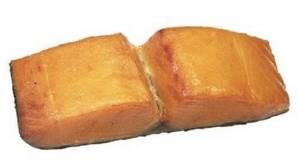
Description of preparing balyk from sturgeon
Sturgeon balyk is prepared at home by analogy with other types of fish. It must be cut, salted and dried. The smoked product has an original taste. Balyk is smoked from osterina after salting and drying.
Ingredients
Dried sturgeon will turn out tender and aromatic even when marinated exclusively in salt. Adding sugar makes the taste sweeter and speeds up the salting process. Individual components will help highlight certain notes of the dish:
- black and allspice ground pepper add a spicy kick and enhance the natural taste of sturgeon;
- ginger and nutmeg add spicy notes without changing the natural aroma of sturgeon;
- lemon balm refreshes the aroma and taste.
You can use other brine ingredients, but you need to be careful with them. Sturgeon dried at home should have a pronounced fishy taste, so you should not combine more than 3-4 components.
Salting and soaking
Before you prepare sturgeon balyk in brine, you need to prepare all the spices and the container in which the fish will be marinated. A layer of salt is poured into the bottom of the container, on which the fillet is placed. Each layer of sturgeon is sprinkled with salt. By adding sugar in a 4:1 ratio, you will be able to draw moisture out of the meat faster. In this state, the sturgeon balyk is sent to the refrigerator for a day.
Every other day, the sturgeon is filled with brine. To prepare it, take 1 tbsp for every liter of water. salt. There should be enough liquid so that the fish is completely covered. Depending on the size of the fillet pieces, marinate for 4 to 7 days.
After salting the sturgeon in brine, it should be washed thoroughly. It is better to take a saline solution for this. For every liter of water, take 1 tbsp. salt without a slide. After washing, soaking is carried out. Its duration depends on the brining period. Sturgeon balyk, which has been salted for 7 days, needs to be soaked for 7 hours.
Drying, withering
After soaking, the sturgeon is wiped dry with paper towels and strung on twine. It is necessary to make loops along the edges so that there is something to fasten the balyk to for drying. Two days are enough for drying. If the pieces are large, it will take 3-4 days.
The best time to prepare sturgeon balyk is March or November. There are no flies at this time. But if drying is carried out in the summer, then you can wrap the fish in gauze for protection. If sturgeon is dried in winter, it will take longer.
At this point, the sturgeon balyk is ready and can be cut and served. To enhance the taste and add a pleasant smoky aroma, you can prepare smoked sturgeon.
Drying
Already salted fish after soaking must also be dried before smoking. It should stand in a warm place with dry air. In total, drying will take no more than two days if you follow these rules. However, if the air is too humid, the cooking time will be delayed for the same period of time. So you need to carefully ensure that the fish is dried, but does not develop an unpleasant odor. After this, you can eat it or smoke it a little more if desired. This will make a cold smoked balyk.
Cooking balyk from sturgeon
For cooking, I chose a large fresh fish weighing about 3 kilograms. When choosing, pay attention to the fact that the fish is stored at a temperature from 0 to -2 degrees. and should not be re-frozen.
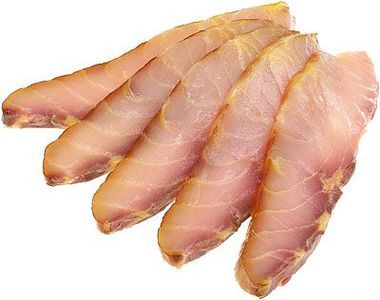
The process consists of several stages:
- fish cutting;
- salting and soaking;
- Drying and drying;
- Smoking (optional)
Fish cutting
- He put the fish on the table, cut off its head, tail and abdominal part. He took out all the giblets, made a cut in the middle of the ridge and took out the vizig. For those who don’t know (I’ve already learned), viziga is a kind of spinal cord, poisonous in many large fish, and it’s not worth preparing it, since it’s a troublesome task.
- We don’t throw away the heads and tail - they will be used for tasty and rich fish soup, but I will tell you about this in the following recipes. The cut peritoneum is washed and salted separately. It makes a great snack to go with beer.
- I cut the remaining portion of the balychka into small pieces. I found the simplest recipe for pickling in a jar and use it always.
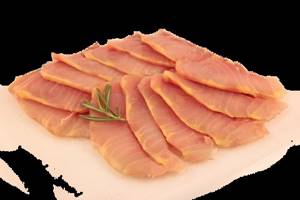
Salting and soaking
I poured 1 cm of salt onto the bottom of the jar and laid the pieces of fish crosswise, skin side down, so that the fish cuts remained tender. Sprinkle salt on each layer and place in a cool place. For me this place was the bottom shelf of the refrigerator.
A day later, I made a brine - mixed 1 tablespoon of salt in a liter of water, poured the brine so that it lightly covered the former inhabitant of the deep sea. He stayed like that for about five days.
After this, you need to soak the delicacy. The easiest way to do this is in a saucepan by filling the fish with water. In terms of time, this should take the same amount of time as the salting itself.
Drying and drying
After soaking, I rinsed the fish and prepared it for drying. Drying should take place in a warm, dry place. If the weather permits, this process takes no more than two days. If there is strong humidity, it will take two or three times longer to dry. It’s humid on my balcony and the wind is not from the south, so to help the bad weather I used a fan so that the fish wouldn’t have an unpleasant odor. After two days, with the fan periodically turned on, the fish was dried and ready to eat.
If you are going to dry your fish outdoors, be sure to protect it from insects and flies by covering it with netting or gauze.
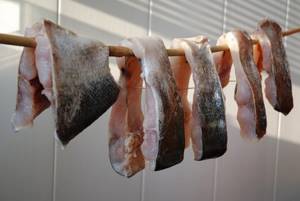
If desired, after all the procedures you can smoke the fish. I did it a week later at the dacha and was very pleased. The guests liked my first creation, everyone was delighted with the taste, their own preparation, and the emotions received at the table. By the way, everyone at the table received not only gastronomic pleasure, but also calories! The fish turned out fatty and tender. So for those who are not on a diet, bon appetit!
Hot smoking
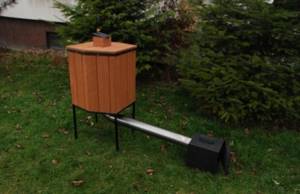
If you don’t want to wait that long and, moreover, you have a smokehouse available, then you can smoke the sturgeon in it. To do this, rub a mixture of various spices into the fish - for this you should use cloves, cinnamon, ground black pepper, bay leaf and sugar. Leave it like this for about a day, and then pour a glass of white wine. The fish will be ready in a day. After this, it should be removed from the marinade and washed thoroughly, and then dried in the fresh air for several hours.
For hot smoking, sturgeon is placed in a smokehouse, where it must be cooked for several hours at a temperature of 70–80 degrees. You should carefully watch the time and temperature, otherwise the fish will turn out quite dry.
For those who want to get balyk with a pronounced smoked taste, you should keep the fish in the smokehouse for a longer period. It would be best to leave it for about 2-3 days. The temperature on the first day should be no more than 25 degrees, and the rest of the time no more than 30.
Don't let the sturgeon become fresh again! Salting rules
There is a well-known consensus among nutritionists regarding fatty varieties of seafood: they are good for the skin, brain, and heart. Of course, red varieties are favorites in terms of taste and fat content, but the idyllic picture is disrupted by the cost of such a product, so the consumer prefers to see it on the table as a decoration on major holidays. But how to provide your family with healthy food the rest of the time?
After all, other seafood should be present almost every day in a healthy and wholesome diet. The taste of the fish depends on the recipe and the type of brine - pickling sauce.
Initially, brine is a salt solution, which can be natural or artificial. In the first case, the fish was covered with dry salt, which dissolved in the moisture released from the carcasses, and in the second, a liquid brine was prepared, which was poured into the product. By changing the proportions of artificial brine, you can achieve a variety of taste qualities for pickles made in your own kitchen. Here are a few recipes that fully reveal and even improve the taste of fish.
Recipe for salting mackerel pieces. By cleaning the carcasses and cutting them into small pieces, we will ensure that our fish will be ready in just a few hours. Brine can be prepared in several ways:. Do not forget that preparing fish for salting is a very important stage, which directly affects not only its taste, but also the presentation of the dish. Brine for salting fish, semi-finished product TK Food raw materials, food products and semi-finished products used for preparing Brine for salting fish, semi-finished product must comply with the requirements of current regulatory and technical documents, have accompanying documents confirming their safety and quality, certificate of conformity, declaration of conformity, quality certificate, etc.
The preparation of raw materials is carried out in accordance with the recommendations of the Collection of technological standards for public catering establishments and technological recommendations for imported raw materials. Stir until dry ingredients dissolve. Since the recipe is very simple, I will not illustrate it, but it is worthy of execution, since the fish prepared in this way has an unsurpassed taste!
This is an excellent recipe that has accompanied many wonderful feasts and earned many excellent reviews. Nevertheless, today I want to share with you an almost similar, but slightly different recipe. A little theory. There are two main approaches to cooking fish and meat... Some cook so that the fish or meat melts in your mouth... and are very happy when this happens.
The second part of people likes it when meat or fish needs to be chewed, that is, so that it does not melt in the mouth. This recipe is suitable for those who like fish to melt in their mouth….
First we make brine. Tuzluk is a Turkic word. For our understanding, the word brine is most suitable. In fish cooking, a saturated solution of sodium chloride is NaCl. The correct brine has a certain scale. It is believed that for optimally good salting of fish it should have a density of degrees, on the Baume scale, but in practice this information is usually not applied.
In our case, brine is a solution of salt and sugar brought to a boil and cooled to room temperature. For a kilogram of salmon, if you pack the meat tightly, in a small-diameter container, you need about a glass of water.
Take a glass of water gram. In this water, you need to add 2 tablespoons with a small heap of salt and one spoon of sugar with exactly the same heap. Stir with a spoon to dissolve the salt and sugar in the water. In a small saucepan, bring the brine to a boil and, after removing from the heat, cool to room temperature. When the solution has cooled, you need to pour it over the fish fillet placed in the container and put it in the refrigerator. If you like lightly salted fish, then after 4-5 hours you can start eating it.
If you like it saltier, leave it until the morning. If you don’t eat everything in 2 days, you will be able to evaluate the process of changing the taste of fish depending on time. Moreover, it is impossible to say exactly in which case it is better, when it stood for 5 hours or when it stood for several days.
Determine for yourself based on your taste and preferences. The fish is not very salty and very tasty.
Selection in store
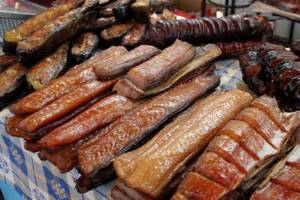
If you doubt that you can prepare sturgeon balyk yourself, then try to make a quality purchase in the store. To do this you will need to follow several rules:
- The weight of the fish carcass should be about three kilograms, that is, it should be quite large with a lot of fat. Only such sturgeon will have a pleasant taste.
- To the touch, smoked balyk should be very elastic, and on top it should be covered with a very thin layer of fat.
- There should be no gray spots on the cut, as well as moisture - these are indicators that the fish has been lying around and has been soaked.
- If mold or mucus is visible on the sturgeon, then it is completely spoiled and should not be eaten.
HOW TO SALTY FISH
Normal 0 Microsoft Internet Explorer4
HOW TO SALTY FISH.
It is better to salt and dry winter and spring fish: before spawning, its meat contains more fat, so after processing it has better taste. In addition, drying occurs at a time when there are still few flies and it is easier to protect the fish from their larvae.
Salting.
The most delicious salted species are bream, roach, sabrefish, and ide. Ram, fisherman, bleak, pike perch, asp. Catfish, taimen, lenok, salmon, etc. Coarse salt is used for salting. Its main purpose is to remove moisture from the fish, and not to give it taste or have a preservative effect. Coarse salt dissolves slowly at low temperatures and requires moisture, which it draws from the fish. With fine salt this effect does not work; it seems to “burn” the fish meat, quickly salts it, but does not dehydrate it. Large fish should be gutted before salting, you can even cut it into pieces, but you should not touch the abdominal cavity so as not to damage the thin film covering the layer of fat on the abdomen. An incision is made through the back, along the ridge, cutting off the ribs from the spine on one side. Fish and fillet pieces are not washed in water, but only wiped dry with a clean cloth. Medium fish weighing from 1 to 3 kilograms can be salted whole, and to speed up the process, a saturated salt solution is injected into the abdominal cavity through the anus using a medical syringe without a needle or a small enema with a tip made from a ballpoint pen. The density of the solution is determined by the maximum ability of the salt to dissolve in water. The top of the fish is rubbed with salt, this removes the mucus and, in addition, salt gets clogged under the scales. Salt is also poured into the mouth and under the gill covers. After this, the fish is placed in the prepared container. With small fish there is less hassle - they are simply sprinkled with salt and laid in layers.
Dry salting.
Place a clean canvas rag or burlap on the bottom of a basket or wooden box. The prepared fish is placed on it in dense rows, head to tail, belly up and sprinkled with salt. The total salt consumption is 1.5 kilograms per 10 kilograms of fish. A wooden lid is placed on top of the fish and a heavy oppression (stone) is placed on it. It is absolutely necessary, as it prevents the formation of air cavities in which putrefactive bacteria can develop, and, in addition, makes the fish meat more dense. After some time, juice is released from the fish; it flows out through the cracks between the bars of the basket or the boards of the box. On the 5-10th day, the fish is salted. All this time it should be in a cool place (refrigerator, cellar).
Wet Ambassador.
The fish is placed in layers in a non-oxidizing container (bucket, pan, tank, barrel), also belly up, and sprinkled with salt at the rate of 1 kilogram per 10 kilograms of fish. To give the fish a special, delicate taste, add a tablespoon of granulated sugar to the salt. A circle made of boards or sawn from a single piece of wood is placed on the fish, preferably from linden or aspen (a circle made from wood of these species does not emit resin or tannins and does not deform in brine). After a day or two, the resulting brine (brine) covers the entire fish; it is well preserved in a cool place. Usually on the 3rd to 8th day (depending on the size) the fish is completely salted. Then it must be removed from the brine, washed in running water, dried in air and placed in a wooden box or basket for storage. After this, the brine is usually poured out. But in the old days they saved salt, and merchants, having sold fish, for example, in Rybna (Rybinsk), floated barges with brine down the Volga back to Astrakhan. Here it was “strengthened” with salt and used again. You can also prepare fresh brine by dissolving a kilogram of salt in three liters of water. The resulting solution is poured into the fish placed in the container. This method is also called wet and is used when salting small fish.
Sagging ambassador.
For fatty fish, saggy salting is used. The fish are hung on transverse rods in a saline solution so that the carcasses do not press on each other. The density of the solution is determined using a raw potato: it should not sink. After 5-7 days, the fish can be eaten. During camping conditions in the hot summer, fish are salted in large plastic bags. They are buried in the ground or sand to a depth of 0.5-1 meter. A small bag is placed over the neck to protect from rain and dew. A layer of sand or earth above the fish creates coolness and at the same time is oppressive. Before salting, large fish are gutted, the tail and head are cut off, and the internal cavity and cut points are wiped dry. Under no circumstances should you wash gutted fish. The prepared carcass is rubbed on the outside with salt, generously sprinkled with it on the cut sites and the internal cavity, wrapped in a clean rag or burlap and tightly wrapped with an elastic bandage or twine. Children's rubber jump ropes are good for this: they tightly squeeze the fish, simultaneously acting as oppression. Before eating, large salted fish are soaked in cold water or milk for 3-4 hours. After this, you can immediately eat, fry, or boil it.
Drying.
Medium and small salted fish are used for drying. First you need to soak it in cold water for one to two hours, and then hang it in the shade in the wind, preferably upside down. In this position, moisture flows out through the mouth, and the fish dries faster and more evenly. On a wooden board, use a knife to pierce the fish near the tail and, using a straightened large paper clip or special hooks made of stainless wire, hang them on a string. If flies have already appeared, then to protect against them you need a gauze canopy with a neck, which must be tied after hanging. Drying lasts from four to ten days. The finished fish is stored in a basket or bag in a cool place, protected from sunlight.
Salting fish.
Sprinkle a layer of salt on the bottom of the dish. Place the fish tightly in a bowl, sprinkling it generously with salt (the coarser the salt, the better). We place a wooden circle on top (you can use a plate) and bend it on top - the more fish, the heavier, but not less than 1 kg (jars filled with water are suitable). Place in a cool place. Ambassador in brine. Prepare brine - a strong brine. At home, the easiest way to determine the required density of brine is by dropping a raw egg into it - it should float to the surface. Sprinkle a layer of salt on the bottom of the dish, the rest is the same as for dry salting. Necessary notes. Salting fish involves dehydrating it and replacing some of the water in the tissues with salt. Therefore, the “tanning” of the fish can be considered a criterion for readiness - it becomes hard and does not bend well. The dry salting process takes longer. Salting frozen fish is quite complicated; when it thaws, the tissue structure is disrupted, so frozen fish “takes up” a lot of salt. Therefore, it is difficult to catch the moment when the fish has already been salted, but not yet over-salted, like brine. If the fish is fatty, do not be afraid to oversalt it - there is very little water in the fatty tissues, so the fish will not “take on” a lot of salt. Fatty fish can be stored in brine. If fish is salted for drying or smoking, then after salting it should be soaked for two to three hours, changing the water frequently. And as a bonus - fish ambassador, as we now call it “in Bulgarian”, and our grandfathers called it salamur. Fish, preferably with dense flesh (hake, ice fish, pike perch, horse mackerel). When frozen, remove the skin (it’s easier this way) and remove the fillet. For fish with delicate flesh (mackerel), it is better to remove the fillet with the skin on, first removing the scales. Cut the fillet into small pieces, approximately 40-50 grams. Cut the onion into large half rings, finely chop the garlic (I don’t recommend using a crush). Add ground black pepper, salt and vinegar to taste, a little finely broken bay leaf, and unrefined sunflower oil. Mix and put in the refrigerator overnight. I'm used to adding all the ingredients to taste. Approximate guideline: for 2 kg of unprepared fish - 0.5 kg of onion, 3-4 large cloves of garlic.
Salted herring.
Here’s another recipe we make often, the taste is mmm-mm, tsk-tsk-tsk! You take fresh frozen herring, after thawing, cut off the head and throw out the insides, put it in an enamel container and fill it with brine: a glass of salt per liter of water. Cover with a lid so that the fish does not float up. All! After 12 hours - ready. You take out the fish, clean it, cut it into pieces and put it in a jar, add onions and vegetable oil - well, it won’t last long - it’s impossible to resist.
Smoking.
A steep bank is chosen. Usually sandy. Yes! The fish must either have already been caught or is already being caught, but it’s better to have already been caught (by men). A metal paddle from the legendary Salyut kayak is used to dig out a stove, and on top, a meter and a half or two meters away, is a smoking pipe. The instrument can be different if desired, but the one from Salyut is better. At this time, the women gut the fish and tie it with harsh cotton threads for hanging in a pipe. In the pipe at different levels, beams are installed from rods stuck into the walls, to which the fish is tied. The stove is fueled with alder wood (best) and heated so that the flame does not lick the fish hanging in the chimney, but the fish should not be covered with frost. The burning firewood is sprinkled with alder leaves or grass to taste. In general, this is how it was - in the evening we caught fish, prepared it, dug a stove, loaded it with fish and firewood and lightly flooded it overnight. During the day we continued this pampering and by the evening we began to try the results, which are invariably excellent! Smoking 2. No slope or sandy shore needed. The turf is removed, using a size of ~ 1 * 0.5 m), and a hole is dug ~ 40-50 cm deep, a fire is burned until the flame disappears and good coals appear. Logs/logs of raw alder with a diameter of ~ 5-8 cm are laid in a row on the coals. A layer of foliage from the same alder is laid on top and prepared fish is placed on it. It is again covered with a layer of alder leaves, and the whole thing is covered with turf. Yes, one more important point: even before laying the logs on the coals, a stake with a diameter of 5-8 cm is inserted into the corner of the pit, which is removed after laying the turf to create a hole. All this was left unattended for 3-4 hours (!). Then you open it and enjoy. Smoked carp. Take with you on your fishing trip a smokehouse, a supply of oak logs, fresh cabbage, pepper, salt, mayonnaise. Catch carp. Clean and gut. Chop the cabbage finely and add a little bit (a few rings per serving) of onion. Mix cabbage with mayonnaise (as you would for a regular salad) and place it in the belly of the carp. Now into the smokehouse for 20 minutes. Consumed as in the first paragraph. General comment: carps weighing 500 - 1000 g. Mirror ones clean better (faster). You need to eat quickly, otherwise these bastards will devour everything without you! Cold smoking. In urban conditions, it is quite difficult to create something good for cold smoking. In general, a smokehouse for cold smoking has the following device. A box is made with a height of approximately 1.7-1.8 meters, other dimensions are equal to 1 meter. A small ditch is dug from below the box, 40 centimeters deep and the same width. The length of the ditch is at least 1.5 m, but there is no need to dig an anti-tank ditch either. An extension is made from the opposite end of the ditch, which comes to the surface; the rest of the ditch is covered with something. The subject is hung in a box with its tail down. There should be any distance between the hanging subjects; the only important thing is that they do not touch each other. From the opposite end, sawdust is set on fire in the widening of the ditch. After they light up, pour some dry sawdust onto the burning sawdust. The fire goes out, and the sawdust continues to smolder, producing smoke that enters the box along the ditch and exits through the holes in the upper part. You can also build a ground-based smokehouse by laying out a small brick stove and bringing smoke through a pipe parallel to the ground to the box. Instead of a box, you can use a barrel. You can even put a barrel on some high fireproof box about 1-1.5 m high and smoke sawdust from below. Give free rein to your imagination. However, there are some requirements. 1. The sawdust should smolder and not burn, otherwise we will get hot smoking, and the fish will look like soggy soap with about the same taste. 2. The distance from the burning place to the product should not exceed 1 meter for the above reason. 3. Keep an eye on the process, as the sawdust may catch fire on its own and you will end up with fried-smoked fish. 4. Sawdust preferably cherry (the smell is amazing) but, frankly speaking, pine sawdust was also used, mixed and whatever was on hand. True, sawdust of some types of wood can give off bitterness, as I have heard. But I have not encountered cinchona sawdust. Smoking 3. I don’t know about camping, but you can try a simple device for fishing or for the garden. Take a sheet of roofing iron, an old, leaky enamel tank, in the bottom of which you need to make several additional holes, several steel rods or reinforcement bars. The latter can be found at any construction site. Along the length of the tank, three posts are cut from the fittings, and several rings are made along the diameter of the tank. The number of rings depends on the volume of the tank. The rings are then welded to the posts, and a thin steel wire (string) is wound around these rings in a lattice, like on a badminton racket. That's it, you can go fishing, taking salt with you. On the spot, we dig a hole in which we light a fire or use bricks that happen to be on the spot to build a fire pit. The main thing is that a sheet of iron can be placed above the fire. We clean the caught fish, gut it, and sprinkle it with salt for about 30 minutes. Then remove salt and place on wire racks. A pinch of sawdust or shavings of alder, cherry, apple, pear, etc. is placed on a hot sheet of iron. A structure with fish is quickly placed on top, which we quickly cover with a tank. Sprinkle the gaps that form between the sheet of iron and the edges of the tank with sand or earth. From the moment the smoke appears from the holes in the bottom of the tank, we count down the time. Small crucian carp cooks for 15-20 minutes. Try it, experiment. You can also cook game after soaking it in a marinade. The good thing about the design is that it’s easy to manufacture and you wouldn’t mind hiding it in places where you regularly go fishing or hunting, rather than carrying it with you. Smoking 4 Gut the freshly caught fish (do not clean it). Small and medium-sized specimens are cut along the belly, larger ones along one side of the back (you can also cut along the belly, but you need to make an incision along one side of the back). Particularly large fish are gutted through a cut in the belly and then cut into transverse pieces about 3 fingers thick. Then the fish is salted. A layer of coarse salt (necessarily coarse) is poured into an enamel dish (nothing else), then a ball of sabzh is placed, always sprinkled with salt, before putting it in, and so on until the dish is filled. Usually a bucket is used. On top of the subject it is necessary to put oppression in the form of a stone or a pair of bricks. The fish should be salted for at least a week in a cool place. More is possible. In my memory, there are cases when fish were salted for 5-7 months and nothing happened. If it sits for even longer, it will begin to soften in thin places, and small specimens end up with ribs protruding, which is unattractive, although not fatal. When you decide to smoke fish, you need to remove it from the brine. The brine is not reused. Residents of rural areas, be careful with the release of brine, because if you throw it in a place accessible to chickens and they get drunk on it, then they are all screwed. The removed subject is soaked in water the longer it is salted (usually about a day). If the subject has been salted for several days, then you don’t have to soak it at all. But be careful, the more the subject is salted, the more likely it is that microbes that accidentally got there will die, since a strong saline solution has some antiseptic properties. After soaking, the subject should be rinsed in clean water and hung to dry. The long-standing opinion that for quick drying you need to place the subject in some hot place is not true. You will get dry on top and raw inside. If the weather is very hot, the fish can turn out smelly even in the shade, so in 40-degree heat it is advisable to refrain from drying. It is best to dry in the shade in a special device such as a rectangular frame covered with a fine mesh, as flies circle around in clouds (oh, why am I not a poet). You need to check the subject for readiness in the evenings, when there are no more flies. The fish is considered ready when it is not yet in that stage of dried roach used for beer, but should be relatively soft. Be sure to take the time to smell each fish, especially the inside; it’s better to throw out any suspicious ones. We place the dried fish in a smokehouse, which needs special mention. Smoking 5 The fish was smoked today on Lake Baikal, although it was a weed fish - a sorozhka. So the men simply found a sheet of iron (quite rusty%()), made a lid out of it, like on cardboard boxes - 20 cm high, made holes with a nail, carefully cut alder branches, already cleared of leaves, were placed on top, and a gutted and coated fish went on top salt to taste). This entire structure was erected on the coals, where soaked alder branches with leaves had previously been placed, and the process began. Smoked young salmon 4 young salmon, 2 lemons, sliced, 2 sorrel leaves, olive oil, ground black pepper, 3 tbsp. spoons of jasmine tea. Stuff the inside of the fish with lemon. Place the salmon in a baking dish. Drizzle with olive oil and sprinkle with pepper. Bake in the oven for 25 minutes until fully cooked. Place fish on paper towel. Place the tea in the bottom of a large saucepan, secure a wire rack in the middle, place the fish on it and close the lid. Place on the fire and heat until the tea begins to smoke (turn on the hood or open the windows). After 10 minutes, serve with green salad. Hot smoking The idea is that the fish should be cooked in hot smoke. It turns out (for me) boiled, smoked and baked. A pit is dug in a steep bank/ravine (can be made of stones or pieces of turf/earth) (the dimensions are arbitrary; below I will explain the criteria for their selection). The main indicator is depth. The depth should be such that a good layer of coals fits in the pit and a layer of fresh branches (birch, alder) on top of it. Plus another 10-15 centimeters to the level where the rods (skewers can be) will be located on top of which the fish will lie, plus another 10 centimeters to cover the whole thing with a piece of, say, tarpaulin. The length and width depend on the amount of coal-forming firewood and the fish caught. Regarding the complicated “coal-forming firewood”. Pine does not produce good coals. It either burns to ashes or smokes at all, practically without burning, and resinous smoke is contraindicated for us - the fish will taste like a roasted Christmas tree. It is best to use birch, as well as willow, alder and other elms. In general, with coals it’s exactly the same as for barbecue. First, a fire is lit at the bottom. We light a layer of good coals, and at the same time the walls of the smokehouse heat up. Then, at such a height, so as not to burn, rods with a thickness of ~1.5 cm are stuck into the walls. (Too thin is dangerous that they will burn, but thicker will interfere with the smoking of the fish). If a flame breaks out from the coals, it’s not too scary. On top of the coals we throw trimmings/stubs of fresh branches of deciduous trees without leaves (from birch the fish will have a golden hue, and from alder, although dark, it will have a richer smoked taste). Place the fish on the rods. Do not lay them too tightly together. We cover the top of the smokehouse with a piece of tarpaulin or something similar. The goal is to allow the smoke to dissipate and the coals to flare up. To prevent the coals from “suffocating” at all, you can leave a small gap at the bottom or occasionally open the canopy. At the same time, check and turn the fish over, spray dried and flaming branches with water, add more fresh branches, or even slightly fan the dying coals. We need thick smoke and a fairly high temperature, but not so high that the fish is fried and the rods burn out. You can fill the hole on the side with flat stones or pieces of turf, and on top with at least a piece of polyethylene, as long as it doesn’t melt. Before smoking, the fish is cleaned and gutted. Large ones are cut into pieces. Then it is placed in concentrated brine for about 10-20 minutes or simply salt and pepper on top to taste. Class! I am amazed at all the expressions in recipe descriptions like “salt to taste” or “fry until done.” Complete empiricism. What’s good about brine is that you can add a few bay leaves and peppercorns, garlic cloves, etc. to it. taste. If the fish is smoked whole, then the abdominal cavity needs to be expanded or a sliver inserted there to expand it. Large fish can even be cut into halves along the ridge. In principle, lying on the rods, the fish does not fall apart too much and does not need to be tied with twine, as if it were smoked in a suspended state. The fish is smoked until cooked. In general, I determine by taste by picking out a piece with a knife. Cold smoking. It starts with digging a hole almost similar to that used for hot smoking and from it a ditch 2-3 meters long, which will serve as a chimney. From above this ditch is covered with branches, and on top of them with turf and earth. A frame is built over the outlet of the ditch and covered with plastic film. The fish is hung under the film. The fish should be tied with twine, because... it may fall apart. At the bottom, the film is pressed to the ground with stones or sprinkled with earth/sand so that no gaps remain. An exhaust slot must be provided in the upper part of the resulting booth. We light a fire and burn a lot of coals. On top of the coals, without knocking down the flame, we throw a lot of stubs of branches. We cover everything tightly with a piece of tarpaulin or something similar, but leave a gap at the bottom to create a draft. The draft should be such that the coals do not die out. But not so strong that a flame would form. The process is long. Smoke must enter the “booth” constantly. If the coals burn out, then close the chimney and relight them. If the branches have dried out and caught fire, you can throw new ones on top of them to “smother” the flame. There should be thick, slightly warm smoke in the “booth.”
Salting fish.
Add a layer of salt to the bottom of the dish. Place the fish tightly in a bowl, sprinkling it generously with salt (the coarser the salt, the better). We place a wooden circle on top (you can use a plate) and bend it on top - the more fish, the heavier, but not less than 1 kg (jars filled with water are suitable). Place in a cool place. Ambassador in brine. Prepare brine - a strong brine. At home, the easiest way to determine the required density of brine is by dropping a raw egg into it - it should float to the surface. Add a layer of salt to the bottom of the dish, the rest is the same as for dry salting. Necessary notes. Salting fish involves dehydrating it and replacing some of the water in the tissues with salt. Therefore, the “tanning” of the fish can be considered a criterion for readiness - it becomes hard and does not bend well. The dry salting process takes longer. Salting frozen fish is quite complicated; when it thaws, the tissue structure is disrupted, so frozen fish “takes up” a lot of salt. Therefore, it is difficult to catch the moment when the fish has already been salted, but not yet over-salted, like brine. If the fish is fatty, do not be afraid to oversalt it - there is very little water in the fatty tissues, so the fish will not “take on” a lot of salt. Fatty fish can be stored in brine. If fish is salted for drying or smoking, then after salting it should be soaked for two to three hours, changing the water frequently. And as a bonus - fish ambassador, as we now call it “in Bulgarian”, and our grandfathers called it salamur. Fish, preferably with dense flesh (hake, ice fish, pike perch, horse mackerel). When frozen, remove the skin (it’s easier this way) and remove the fillet. For fish with delicate flesh (mackerel), it is better to remove the fillet with the skin on, first removing the scales. Cut the fillet into small pieces, approximately 40-50 grams. Cut the onion into large half rings, finely chop the garlic (I don’t recommend using a crush). Add ground black pepper, salt and vinegar to taste, a little finely broken bay leaf, and unrefined sunflower oil. Mix and put in the refrigerator overnight. I'm used to adding all the ingredients to taste. Approximate guideline: for 2 kg of unprepared fish - 0.5 kg of onion, 3-4 large cloves of garlic. Salted herring. Here’s another recipe we make often, the taste is mmm-mm, tsk-tsk-tsk! You take freshly frozen herring, after thawing, cut off the head and throw out the insides, put it in an enamel container and fill it with brine: a glass of salt per liter of water. Cover with a lid so that the fish does not float up. All! After 12 hours - ready. You take out the fish, clean it, cut it into pieces and put it in a jar, add onions and vegetable oil - well, it won’t last long - it’s impossible to resist!
How to salt fish at home in winter.
A lot has been written about salting fish. The luminaries know this process thoroughly and, if desired, can complement my recommendations, which are intended for beginners and tourist fishermen. There are now a lot of them due to “motorization,” and they often face the problem of how to preserve their catch, how to salt it correctly. However, let’s not forget that well-cooked “Russian” salted fish, which is unlikely to be found abroad, is a kind of national delicacy. First, you need to decide for what purpose you are salting the fish. If you want to eat it immediately after cooking, spicy salting is more suitable; if you want to stock up on it in dried form, pickle it like a roach. If you intend to store the fish for a long time, it is better to cook it like balyk. Spicy salting Salting fish at home is quite simple. First, remember the basic rule: it is advisable not to defrost, wash or gut the caught fish before salting. You will need: pickling utensils made of enamel or stainless steel. And also plastic for food products, salt (edible, grind No. 1 or “Extra”), bay leaf, black peppercorns (allspice can be used), coriander beans or ground. You can salt any river fish weighing from 200 grams to 1 kilogram. I place the fish in the dish in layers, starting with large specimens, head to tail. I sprinkle each layer of fish with a small amount of salt, but so that all the fish is treated with it. I add 3-4 bay leaves, a few peppercorns, a pinch of coriander - and so on until the dishes are full. On top I place a flat lid from a pan of smaller diameter, handle down, or a wooden circle; A plate turned upside down will also work. I put pressure on the lid circle. It can be a clean heavy stone, a metal blank, but it must be wrapped in several layers of plastic film to insulate it from water. I personally use a 5-liter glass jar filled to the top with cold water and the lid closed. This pressure is enough for a 10-liter enamel bucket with fish. Then I place the container with the fish away from the heat source. After 10-12 hours, the fish will give juice (brine). I don’t drain it until the salting is complete. On the 3-4th day, I remove the oppression, pour out the brine and wash all the fish with cold water, fill it with cold water and soak for 1 hour so that salt does not appear on the scales and especially on the head. Then I let the water drain. I spread newspapers on the table in 2-3 layers, on top of them - gauze or old towels. I lay out the fish in rows so that the carcasses do not touch each other. I dry them on one side for 2 hours and the same on the other, changing the top layer of newspapers. If the fish seems a little damp to someone, you can dry it further, although, for example, you are unlikely to do this with herring or red fish. After spicy salting, the fish acquires a reddish-pink color and a pleasant fresh aroma. They eat it as a cold appetizer. This fish is especially good with hot potatoes, and even with beer. It can be stored for a very long time in a cold room, in the refrigerator, in the freezer. Preparing “roach” Before drying, the fish must be salted. I recommend selecting carcasses weighing up to 1 kilogram. They can be of any size, and the fish itself can be of any type. Since many people are accustomed to considering any fish dried in a certain way to be roach, we will conditionally accept this terminology. The fish is placed, sprinkled with salt and covered with bay leaves, as in spicy salting. Install oppression. Salting lasts 2-3 days. After this time, salt, spices, mucus are thoroughly washed off the fish and wiped dry with a towel, then hung out to dry. Practice shows that the best way to attach a fish to a rope is by the lower lip or through the corner of the eye. At the same time, all internal fat is preserved, the fish becomes juicier. I have been using regular paper clips as hooks for many years. But they can be made from any elastic steel wire, bent in a Z shape. As a rule, the fish dries out already on the 3-4th day. It is better to store it in the refrigerator, wrapped in plastic wrap. Balykov Ambassador. This method will require larger fish, weighing from 1 kilogram. I prepare fish for salting as follows. I wash off all the mucus in cold water, carefully rip open the belly, and gut it. I cut off the head just behind the gills, then the tail to the very base, but without affecting the fish. Using scissors, from the anus to the head, I cut off the meat (the lower part of the abdomen to the ribs) - it must be salted separately, otherwise it may become very layered. I wipe the carcass dry with a clean towel. If the fish weighs more than two kilograms, then I make sure to fish it along the spine without cutting the skin on the back. I prepare the pickling mixture: for 10 tablespoons of salt I take 4 tablespoons of granulated sugar, ground cinnamon on the tip of a knife and the same amount of coriander and pepper. I mix the spices well and thoroughly rub the mixture under the scales, sprinkle generously on the inside of the belly, and if the fish is layered, then between the layers. I wrap each carcass separately - in gauze, canvas or any undyed fabric, tie it tightly along its entire length with twine or thick used fishing line and, placing the fish on a tray at the very bottom of the refrigerator, leave it for 7-10 days. I drain the brine as it appears. At the end of salting, I free the fish from the cloth, rinse it with cold water and immediately dry it with a dry towel. Such fish can be stored in the refrigerator for a very long time if it is periodically rubbed with sunflower, olive or corn oil. It is better to serve fish to the table by cutting it into thin wide slices, just like sturgeon balyk is cut.
Salting, smoking and drying fish.
It is well known that in our country the favorite snack for beer is dried fish - Moscow markets are full of roach, sabrefish, bream... However, a man is often faced with the task of salting fresh or frozen fish himself. This is not difficult to do, it is only important to follow the technology and... a wonderful dish for beer is ready! For salting, they use roach, carp, asp, bream, tench, rudd, etc. The easiest way to salt is by dry method, rubbing the fish with salt (preferably finely ground). Fish weighing up to half a kilogram (ram, ide, sabrefish, perch) can be salted without gutting; In larger fish, the entrails are removed. Before salting, the fish is washed, cut from the head to the caudal peduncle, and the intestines and entrails connected to them are immediately removed (milt or caviar can be left). The cut fish is rubbed with salt, which is also stuffed into the gills and inside through the cut. For large fish (weighing more than 1.5-2 kilograms), an additional longitudinal incision is made on the back, where salt is also poured. The fish prepared in this way is placed in rows, belly up, in a barrel or tightly packed box, sprinkling the rows with salt, with more salt being poured closer to the top rows. For every 10 kilograms of fish, about 1.5-2 kilograms of salt are required. The duration of salting in a refrigerated room, for example in a cellar with ice, of fish such as bream, asp, pike - up to 12 days, carp and pike perch - up to 5 days, in an uncooled room - up to 5-7 days.
Salting sturgeon or beluga.
Fish is usually salted in winter; when frozen beluga or sturgeon intended for salting thaws. After dividing the fish (except for the head) by cartilage, taking out the vizig and taking away the head, fins and tail, you should cut the fish into links and rinse thoroughly with water so that there is no blood on the cartilage. After this, place the fish on the table and, allowing the water to drain, rub the links with salt, large ones more, and small ones smaller, and put them in a tub, lightly sprinkling them with salt. When the tub is full, cover it on top with the fins and tails removed from the fish, apply a circle with pressure and leave in this position for two days, until the brine comes to the top; then seal the upper bottom of the tub more tightly and place it on ice, on a board, so that the tub does not leak. If there is not enough brine in the tub, then you need to boil water with salt, turn the top bottom of the tub with a drill and pour the cooled brine into it so that the tub is filled. When you need fish, you take it out with a hook or fork. Mugs should be washed off more often and monitored to ensure that raw water does not get into the tub. If you subsequently notice that the fish begins to become soapy or smelly, then remove it from the brine, wash it in clean water, and evaporate the tub and burn it with straw so that no smell remains. After this, you can put the fish in it again, sprinkling it with a little salt and dry hops, and, after pouring boiled and cooled brine, put it on ice as before.
Fish salted “like salmon”.
This is how you can salt asp, chub, ide, and pike. Freshly caught fish is opened along the entire length from the back with a sharp knife. The head and narrow part of the tail are cut off and set aside for fish soup, where caviar or milt, bladder and liver also go; You can also cut off all the fins. The inside of the fish should never be washed with water, but should be wiped clean with a clean cloth. It is advisable to cut out the spine and, after making light cuts, pull out the ribs with pliers. Prepare a preservative: two tablespoons of salt with




